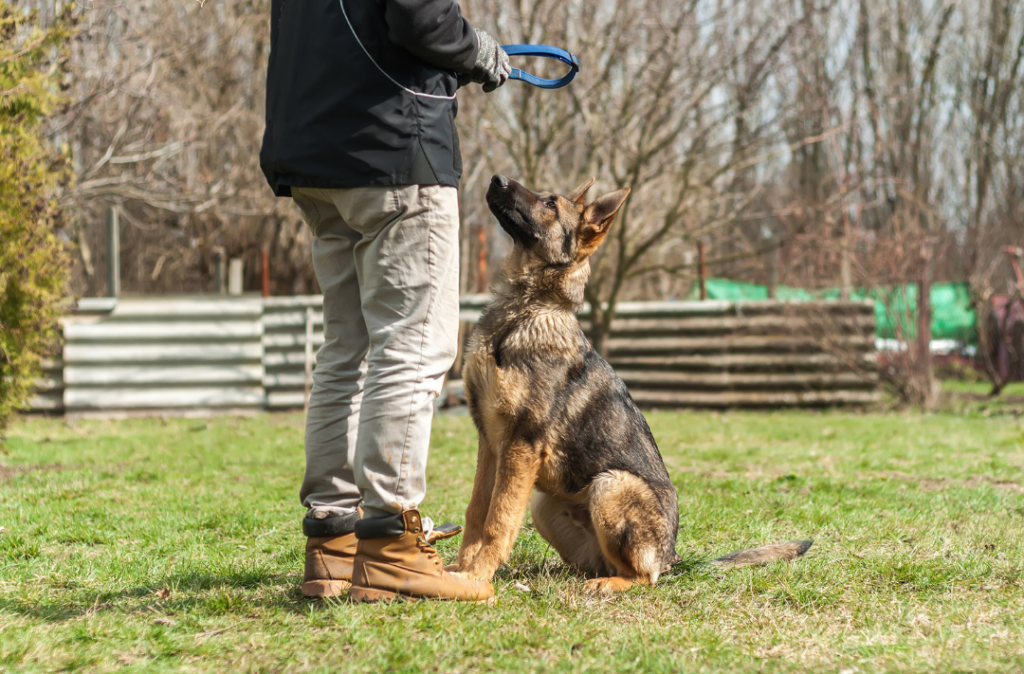Balanced Dog Training
In today’s world, our furry companions are more than just pets – they are part of our families. As responsible pet owners, it’s essential to invest time and effort into properly training our dogs. Balanced dog training is an approach that combines the best elements of various training methods to create a well-rounded and adaptable training program for your dog.
Importance of Training Dogs
Training your dog not only helps you establish a strong bond with your furry friend, but it also helps to ensure their safety, socialization, and overall well-being. A well-trained dog is more likely to be relaxed and confident, making them a pleasure to be around and interact with.

Understanding Balanced Dog Training
Balanced dog training is a holistic approach to dog training that combines positive reinforcement techniques with appropriate corrections when necessary. It strives to strike a balance between encouraging good behavior and discouraging undesirable actions. This approach allows you to build a strong relationship with your dog based on trust, respect, and communication.
Different Techniques of Balanced Dog Training
Balanced dog training incorporates several techniques to create a well-rounded training experience:
Positive Reinforcement: This technique involves rewarding your dog with treats, praise, or affection when they perform a desired behavior. The goal is to encourage the dog to repeat the behavior in the future.
Negative Reinforcement: In this technique, you remove something unpleasant from your dog’s environment to encourage a desired behavior. For example, releasing tension on a leash when your dog stops pulling.
Negative Punishment: This method involves taking away something your dog values when they perform an undesired behavior. For instance, withdrawing attention when your dog jumps up on you.
Positive Punishment: This is the least used technique in balanced training, and it involves adding something unpleasant to discourage unwanted behavior. For example, a brief leash correction when your dog starts to pull on the leash.
Benefits of Balanced Dog Training
Building Trust and Respect
A well-trained dog is more likely to trust and respect their owner, resulting in a stronger bond between the two. Balanced dog training allows you to establish clear communication and boundaries, which are essential for building trust and respect.
Reducing Anxiety and Stress
Dogs that understand what is expected of them are generally more relaxed and confident. Balanced dog training helps to reduce anxiety and stress by providing structure, consistency, and predictability in your dog’s life.

Enhancing Socialization Skills
Socialization is a crucial aspect of a dog’s development, and balanced dog training can help improve their social skills. By teaching your dog how to behave appropriately in various situations, you can ensure they are comfortable and well-adjusted around other dogs, people, and environments.
Encouraging Good Behavior
In addition to building trust and respect, reducing anxiety and stress, and enhancing socialization skills, balanced dog training also plays a significant role in encouraging good behavior. This section of the blog will discuss how implementing balanced dog training methods can positively impact your dog’s behavior and lead to a happier, more obedient pet.
The Role of Positive Reinforcement in Encouraging Good Behavior
Positive reinforcement is an essential component of balanced dog training. It involves rewarding your dog for exhibiting desirable behaviors, which in turn increases the likelihood that your dog will repeat these behaviors in the future. Some common rewards include treats, praise, and playtime. By consistently rewarding your dog for good behavior, you can help to establish a strong bond between you and your dog and encourage them to continue behaving well.
Using Correction Techniques to Discourage Unwanted Behavior
While positive reinforcement is crucial for encouraging good behavior, it’s also essential to address unwanted behavior using correction techniques. This ensures that your dog understands which behaviors are not acceptable. In balanced dog training, corrections are used to redirect your dog’s attention and discourage inappropriate actions without causing fear or pain. Some examples of correction techniques include verbal cues, a quick leash tug, or a gentle touch.
It’s important to note that corrections should always be proportional to the behavior and never be harsh or punitive. The goal is to guide your dog towards better choices, not to instill fear or anxiety.
Consistency and Patience in Training
Consistency and patience play a critical role in encouraging good behavior in dogs. When using balanced dog training techniques, it’s essential to apply them consistently to help your dog understand the rules and expectations. Inconsistent training can lead to confusion and a lack of progress.
Patience is also necessary when training your dog. Some dogs may take longer to learn new behaviors, and it’s essential to be patient and persistent in your training efforts. This will help your dog feel more at ease during training sessions and foster a positive learning environment.
How to Implement Balanced Dog Training
Now that you understand the benefits of balanced dog training, it’s time to put these techniques into practice. In this section, we’ll discuss how to implement balanced dog training, starting with finding a qualified trainer, moving on to basic obedience training, and employing both positive reinforcement and correction techniques.
Finding a Qualified Dog Trainer
The first step in implementing balanced dog training is to find a qualified dog trainer who is experienced in this approach. Look for trainers who have certifications from reputable organizations and a track record of success in working with dogs of various breeds and temperaments.
When choosing a trainer, it’s important to ensure that they align with your training philosophy and use methods you’re comfortable with. You can ask for references, attend a training session, or consult online reviews to gather more information about their approach and effectiveness.
Starting with Basic Obedience Training
Once you’ve found a qualified trainer, it’s time to begin basic obedience training. This includes teaching your dog essential commands such as “sit,” “stay,” “come,” “down,” and “heel.” These foundational skills will serve as the building blocks for more advanced training and help establish a solid relationship between you and your dog.
During obedience training, it’s crucial to maintain a calm and positive demeanor. Dogs are sensitive to their owner’s emotions, and a relaxed attitude will create a better learning environment for your pet.
Using Positive Reinforcement and Correction Techniques
As mentioned earlier, balanced dog training relies on a combination of positive reinforcement and correction techniques. To effectively implement this approach, you’ll need to consistently reward your dog for good behavior and use appropriate correction methods to address unwanted actions.
Remember to always use rewards that are meaningful to your dog and apply corrections proportionally and without causing fear or pain. Keep in mind that every dog is different, so it may take some trial and error to find the most effective techniques for your specific pet.
Consistency in Training
Consistency is key when implementing balanced dog training. Establish a regular training schedule and adhere to it as closely as possible. This will help your dog understand the expectations and routine, making it easier for them to learn new behaviors.
It’s also essential to maintain consistency in the application of both positive reinforcement and correction techniques. Be sure to reward good behavior promptly and address any unwanted actions immediately to help your dog make the connection between their actions and the consequences.
Common Mistakes to Avoid in Balanced Dog Training
Even with the best intentions, it’s possible to make mistakes when employing balanced dog training methods. To ensure the most effective training experience for both you and your pet, be aware of these common pitfalls and work to avoid them.
Inconsistency in Training
As mentioned earlier, consistency is crucial in dog training. Inconsistent training can lead to confusion for your dog and slow their progress. To avoid this, establish a regular training schedule and be consistent in your use of rewards and corrections.
Use of Punishment Instead of Correction
One common mistake in dog training is using punishment instead of correction. Punishment involves inflicting pain or fear to discourage unwanted behavior, while correction aims to redirect your dog’s attention and gently guide them towards better choices. Balanced dog training relies on correction techniques that are both humane and effective.
Lack of Patience and Persistence
Training a dog takes time and patience. Some dogs may take longer to learn new behaviors, and it’s important not to become frustrated or impatient during the process. Maintaining a positive attitude and being persistent in your training efforts will help your dog feel more comfortable and foster a better learning environment.

Ignoring the Importance of Socialization
Socialization is a critical aspect of a well-rounded training program. Exposing your dog to various environments, people, and other animals will help them develop confidence and adapt to new situations. Ignoring socialization can lead to anxiety, fear, or aggression in your dog, so be sure to include this component in your balanced dog training approach.
Frequently Asked Question
Balanced dog training is an approach that combines positive reinforcement and correction techniques to create a well-rounded training program that encourages good behavior, builds trust and respect, and enhances your dog’s overall well-being.
Unlike methods that focus solely on positive reinforcement or punishment-based techniques, balanced dog training utilizes a combination of rewards for good behavior and gentle, appropriate corrections for unwanted behavior. This approach is both humane and effective in teaching your dog desired behaviors.
Balanced dog training offers numerous benefits, including building trust and respect between you and your dog, reducing anxiety and stress, enhancing socialization skills, and encouraging good behavior.
Look for trainers with certifications from reputable organizations and a proven track record of success with various breeds and temperaments. You can ask for references, attend a training session, or consult online reviews to learn more about their approach and effectiveness.
Foundational commands include “sit,” “stay,” “come,” “down,” and “heel.” These skills serve as the building blocks for more advanced training and help establish a solid relationship between you and your dog.
Common mistakes include inconsistency in training, using punishment instead of correction, lacking patience and persistence, and ignoring the importance of socialization.
Wrapping It Up
In conclusion, balanced dog training is a highly effective approach that combines positive reinforcement and correction techniques to encourage good behavior, build trust and respect, and improve your dog’s overall well-being. By being consistent, patient, and avoiding common mistakes, you can help your dog reach their full potential and enjoy a strong, lasting bond.
Remember the importance of finding a qualified dog trainer and incorporating both basic obedience training and socialization into your training plan. With dedication and persistence, you can help your dog become the well-behaved, confident companion you’ve always wanted.
Now that you have a better understanding of balanced dog training and its many benefits, it’s time to take action and start training your dog today. With patience, consistency, and a commitment to their well-being, you and your dog can experience the lasting rewards of a balanced approach to training.
